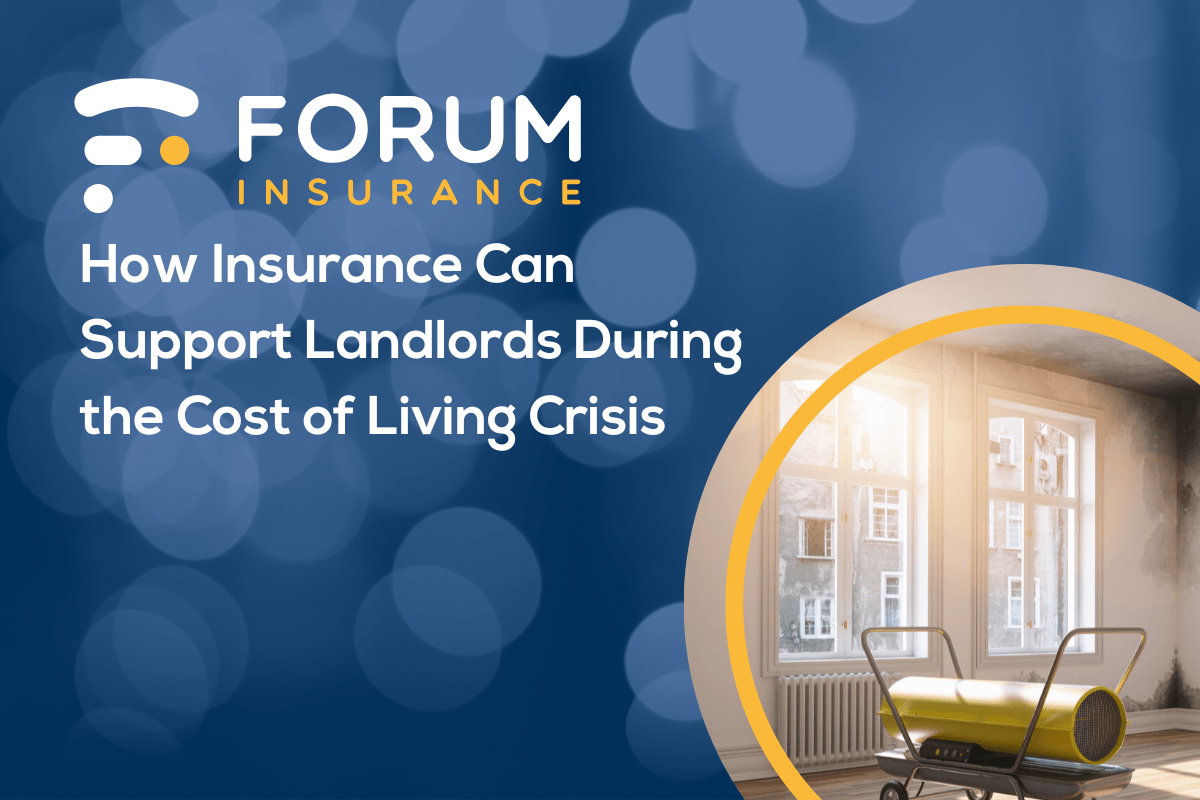Changes to the Insurance Act
Forum Insurance outline the key changes to the Insurance Act that you should be aware of which will come into force on 12 August 2016.
New disclosure duties in non-consumer insurance contracts
Insured parties were previously required to disclose every circumstance that they knew, or ought to have known, which would influence an insurer in fixing a premium or deciding whether to underwrite a risk. This required insured parties to predict, without much guidance, what factors a hypothetical prudent insurer would be influenced by.
Part 2 of the Insurance Act has created a new ‘duty of fair presentation’ aimed at encouraging active, rather than passive, engagement by insurers as well as clarifying and specifying known or presumed to be known matters. When the Act comes into force, before entering into a contract of insurance, insured parties will be required to disclose either:
- every matter which they know, or ought to know, that would influence the judgement of an insurer in deciding whether to insure the risk and on what terms (very similar to the current position); or
- sufficient information to put an insurer on notice that it needs to make further enquiries about potentially material circumstances.
Insured parties will be considered to have known, or ought to have known:
- matters that could be expected to be revealed by a reasonable search of information available to the insured party – for example, information held within an organisation or by a broker;
- anything known by a person responsible for their insurance – for example, a broker;
- insured organisations will also be deemed to have the knowledge of anyone who is a part of the organisation’s senior management, or who is responsible for their insurance.
Insurers will be considered to have known, or ought to have known:
- matters known to individuals who participate on behalf of the insurer in deciding whether to take the risk and on what terms – for example, underwriting teams;
- knowledge held by the insurer and readily available to the person deciding whether to take the risk;
- matters known by an employee or agent of the insurer and which should reasonably have been passed on to the person deciding whether to take the risk.
Brokers will no longer be subject to disclosure duties.
Under the Act, disclosure must be made in a reasonably clear and accessible manner, material representations of fact must be ‘substantially correct’ and material representations of expectation or belief must be made in ‘good faith’. Individuals will be deemed to know matters which they suspected and which they would have known about had they not deliberately refrained from confirming or enquiring about it.
Insured parties should review their disclosure processes to ensure that those responsible for procuring insurance disclose all matters they will be presumed to know.
For example:
- consider keeping internal records of the name and roles of individuals responsible for arranging insurance cover, as matters within their knowledge will need to be disclosed;
- senior management should be involved in any disclosures made;
- evaluate the steps taken to obtain information from internal and external sources and keep records to demonstrate that reasonable searches have been made.
Insurers will not be able to rely on a passive approach to disclosure if seeking to exercise remedies for non-disclosure. More active engagement will now be encouraged and, if not in place already, insurers should consider establishing systems and processes to identify when further enquiries need to be made before underwriting risks.
Insurers should review what information is readily available to those who decide whether to accept risks and the terms on which to do so. For example:
- consider keeping internal records of the names and roles of individuals responsible for these decisions;
- establish appropriate processes and lines of communication to ensure that relevant information is shared widely enough with those making decisions to cover certain risks.
Remedies for breach of duty of pre-contractual disclosure
Previously, an insurer was able to refuse all claims under an insurance contract if the pre-contractual disclosure duty was breached, even if the breach was committed by the broker.
The Insurance Act has now introduced a range of proportionate remedies, applicable depending on the scale of the breach and the state of mind of the insurer. These are:
- deliberate or reckless breach: the insurer will be able to avoid the contract and keep any premiums;
- breach is neither deliberate nor reckless and the insurer would not have entered into the contract: the insurer will be able to avoid the contract but must return any premiums;
- breach is neither deliberate nor reckless and the insurer would have entered into the contract on different terms, other than terms relating to premium: the insurer will be able to treat the contract as if those different terms apply – for example, any additional exclusions that would have been imposed;
- breach is neither deliberate nor reckless and the insurer would have entered into the contract for a higher premium: the insurer will be able to reduce the cover to which the insured is entitled on a proportionate basis.
These remedies will only be available if the insurer would not have entered into the insurance contract had the breach not occurred, or would have done so on different terms.
Practical implications from these changes
To bring an action for relief for non-disclosure, insurers will need to be able to prove how they would have acted differently if the breach had not occurred. Disclosure of underwriting guides and other relevant documents may now be required, along with records of underwriting decisions made and factors considered in particular cases. Insurers will need to consider the extent to which they are willing to disclose commercially sensitive information contained within such records or documents.
Changes to contractual terms and warranties: consumer and non-consumer contracts
Previously, ‘basis of the contract’ clauses could convert all representations made in the course of a non-consumer insurance contract into contractual warranties. Breaching a warranty would completely discharge an insurer from liability for all risks covered by the policy from the time of the breach, even if the warranty had no bearing on the risk.
Part 3 of the Insurance Act has now banned ‘basis of the contract’ clauses from non-consumer insurance contracts. Instead of discharging liability, a breach of warranty now results in the insurance cover being suspended for the duration of the breach and re-instated once the breach has been fixed. An insurer will no longer be able to rely on non-compliance with a warranty, or any other term relating to loss of a particular kind or at a particular location or time, if the non-compliance could not have increased the risk of loss that occurred in the circumstances that it occurred. For example, if a requirement in a policy to maintain window locks is not complied with by the insured party and loss is subsequently caused by flooding, then the insurer will no longer be able to rely on the insured party’s non-compliance to avoid liability as the maintenance of window locks could not have reduced the risk of flooding occurring.
This will not apply in respect of terms that define the risk as a whole: for example, terms restricting cover to non-commercial use, rather than a term that relates to loss of a particular kind during such non-commercial use.
Remedies for fraudulent claims by policyholders: consumer and non-consumer contracts
Previously, in the event of fraud, an insured party would forfeit the whole claim and insurers could also avoid the whole contract. Part 4 of the Insurance Act now sets out a clear statement of insurers’ remedies in the event of fraudulent claims brought by policyholders. Insurers:
- will not be liable to pay the fraudulent claim;
- may recover any sums paid to the insured in respect of the fraudulent claim; and
- may, by notice, treat the policy as terminated with effect from the fraudulent act and retain all premiums paid. Previous valid claims are unaffected.
The same rights apply in respect of fraudulent claims made by persons under group insurance policies, although only in respect of those persons who committed fraudulent acts and not the other innocent members of the group policy. Insurers will need to serve a notice on the fraudulent group member and the person who took out the policy on behalf of the group. Sums paid in respect of the claim may be recovered from the person who committed the fraudulent act, or the person who took out the policy on behalf of the group if they had not passed sums on to the fraudulent person.
Duty of utmost good faith: consumer and non-consumer contracts
Previously, either party could avoid the insurance contract if the other failed to act in accordance with ‘utmost good faith’. Significantly, Part 5 of the Insurance Act has now removed avoidance of contract as a remedy for breach of this duty, and abolished any parts of legislation prescribing this as a remedy. Insurance contracts will still be based on utmost good faith, and clauses and obligations will be interpreted in a way that favours compliance with this duty.
Contracting out of the Insurance Act: consumer and non-consumer contracts
Finally, it is important to note that Part 5 of the Act prevents an insurer from contracting out of its provisions with the effect of placing an insured party in a worse position than they would have been in under the provisions of the Act. Parties to non-consumer insurance contracts can agree less favourable terms than those in the Act, provided that the alternative provisions are clear and unambiguous and sufficient steps are taken to draw them to the intention of the insured party of its agent before the contract is concluded.
Parties to both consumer and non-consumer contracts cannot contract out of the new prohibition on ‘basis of contract’ clauses.
Recent Posts








